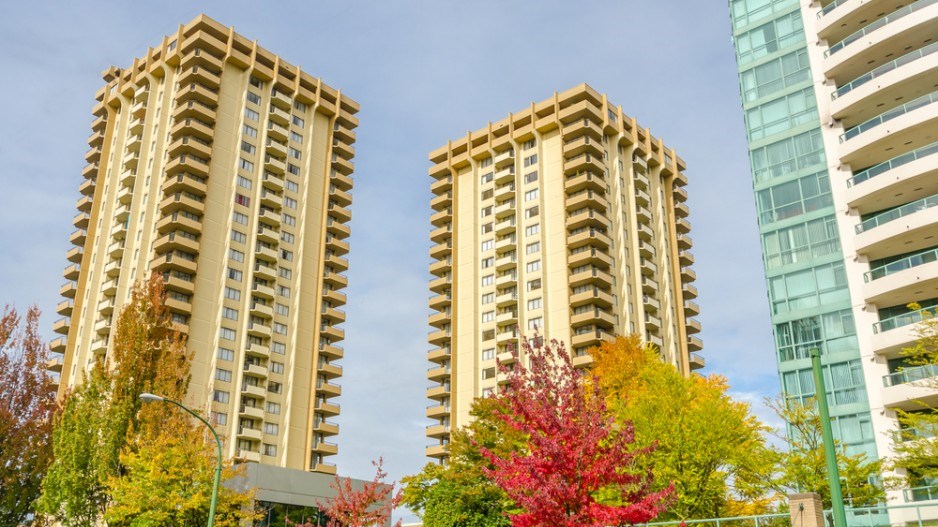Besting a billion
The mid-year tally for Lower Mainland apartment sales gave David and Mark Goodman grounds for believing that total transactions for 2015 would bust through a billion dollars. But activity in the year’s second half has been such that something closer to $1.5 billion now seems possible.
Writing in early December, the Goodmans noted that “total dollar volume skyrocketed to approximately $1.4 billion” this year to date; as the market moves into the year’s last four weeks, a number of transactions have yet to close, meaning the year-end tally could well double the $774 million logged last year.
“It’s a very, very dynamic market right now,” David Goodman said. “It’s been a gangbuster year in volume and actual sales.”
Well-capitalized buyers, cheap financing for everyone else and a tight rental market have combined to push apartment prices to historic highs.
While higher prices mean smaller returns, Avison Young principal Robert Greer said Metro Vancouver apartment buildings offer a stable return and the prospect of appreciation.
Defining scarcity
Metro Vancouver’s tight rental market may well be putting upward pressure on rents, with the Canada Mortgage and Housing Corp. estimating that vacancies in the region slipped to .08% from 1% over the past year, while rent for existing two-bedroom units rose 4.6% – the greatest increase in any major metropolitan area in the province.
A recent report from Colliers International suggests that demand from people aged 18 to 34 – when renting has traditionally been more common than home ownership – is fuelling the rapid escalation in rents.
“This age group has grown from approximately 480,000 people in 1990 to 625,000 people in 2014,” Colliers states. “The total rental apartment universe [all unit sizes] has decreased from 111,000 units in 1990 to 106,000 units in 2014.”
The scarcity of units is backed up by the lack of properties available for purchase and reconfiguration, which has upped competition among investors, in turn boosting property values and the rents needed to make those deals work. The recent sale of Empire Towers at 1203 Broughton Street to Headwater Projects Inc. is an example.
“It’s very difficult to find those concrete buildings in the West End,” said Rob Greer of Avison Young.
While the 40-unit property was atypical so far as it was partly vacant, with no long-term tenancies, the type of construction combined with the potential to undertake significant renovations made it a unique opportunity that fit with Headwater’s long-term investment timeline.
Strong demand for a 150-unit building yet to be built in New Westminster is another indication of the opportunities investors see in the multi-family market.•




